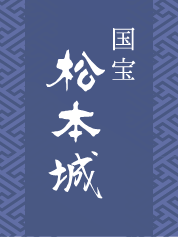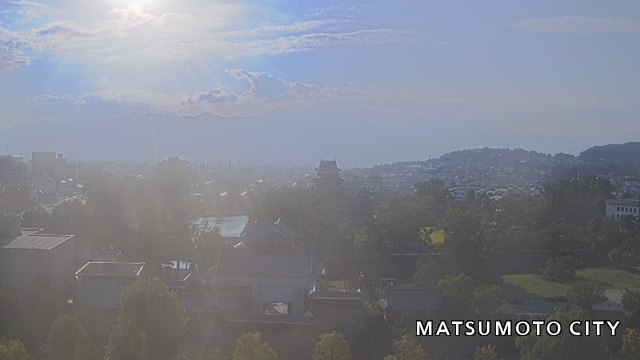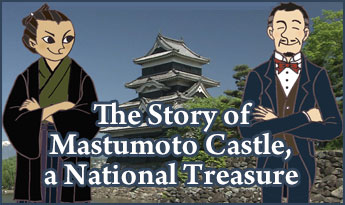Matsumoto Castle through the Seasons
The beauty of Matsumoto Castle and its surrounding gardens changes throughout the year. The cherry trees blooming around the inner moat present a quintessential image of spring, while in summer the castle is surrounded by greenery. In autumn, the trees lining the moats don brilliant colors, and in winter the towering black keep stands in stark contrast to the snow-covered Northern Alps. The castle moats are home to carp, swans, and ducks. The castle is visited in some seasons by rarer birds, like the jewel-toned Eurasian kingfisher and the northern boobook, a mottled brown owl with piercing yellow eyes. If you keep your eyes peeled, you may spot the ruddy orange wings of an Asian comma butterfly.
Spring brings the cherry blossoms, summer the chartreuse new buds, in fall the beautiful fall foliage, and in winter snowy canyons and the Northern Japan Alps accentuate the castle.
Each season has associated events and festivals, many of which celebrate the traditional culture of the Matsumoto area.
*Click to enlarge
Spring
During cherry-blossom season, the castle and the blooming cherry trees on its grounds are lit up at night, creating an ethereal atmosphere along the moats and walkways. Later in spring, there are exhibitions of traditional arts and skills, such as flower arrangement and Edo-period (1603–1867) gunnery techniques.
Summer
In summer, the castle grounds host seasonal events, such as a taiko drum festival and a firelit Noh performance. For a period in August, admission is free for anyone wearing traditional Japanese clothing, such as a yukata.
Autumn
In autumn, the buckwheat harvest is celebrated with a soba noodle festival, and various historical reenactments are held around the castle. The week leading up to “Matsumoto Castle Day” on November 10 is marked by special exhibits and other events.
Winter
The arrival of the new year is marked by many customs and rituals: the Kuromon and Taikomon gates are decorated with winter greenery and sacred braided ropes (shimenawa), and religious rites are performed to “brush the dust” from the prior year and purify and sanctify the castle. On New Year’s Day, the castle grounds are specially opened to visitors as a way to welcome the coming spring.




























































